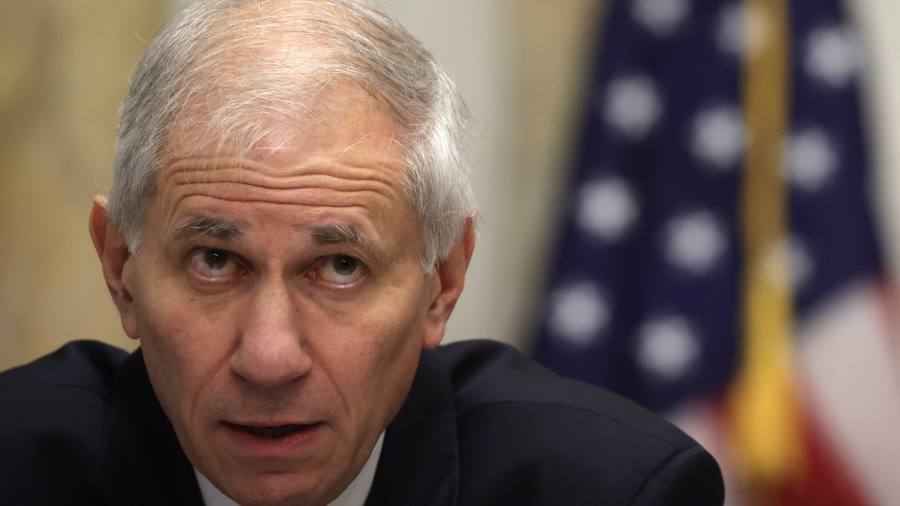US financial regulators have recommended partly revamping American deposit insurance to increase coverage for day-to-day business accounts as a way to reduce the risk of bank runs, such as the ones that brought down Silicon Valley Bank and First Republic.
The Federal Deposit Insurance Corporation said such a targeted increase would be more cost effective and less likely to promote risky behaviour by bank bosses than eliminating the $250,000 cap in place on deposit insurance. Coverage for individual accounts would remain unchanged under the FDIC’s proposal.
The agency’s recommendations came in a report released Monday in the wake of recent bank failures. SVB collapsed in March. First Republic was put into receivership in early Monday in a deal that will result in JPMorgan Chase taking over most of the failed bank.
“Targeted coverage [has] . . . the greatest potential for meeting the fundamental objectives of deposit insurance relative to its costs,” FDIC chair Martin Gruenberg said in a statement.
More than 94 per cent of SVB’s deposits were uninsured, the FDIC said. Many of SVB’s customers were start-ups that had parked all of their funding with the bank and used their accounts to pay staff and basic expenses.
The FDIC did not specify in the report how much the coverage cap should be raised for business transaction accounts. But it calculated that raising it to $2.5mn would likely cover what most small- and medium-sized companies need to keep in their accounts to cover payroll.
Raising the overall limit or adding targeted coverage would require congressional approval and would increase the fees charged to banks for participating in the insurance programme.
The FDIC commissioned the review after concerns about the fate of SVB deposits greater than the $250,000 cap helped spark bank runs on midsized lenders across the country. The Biden administration ended up declaring that SVB and Signature Bank, another lender that failed in March, posed a “systemic risk” in order to protect their large customers.
In its report, the FDIC admitted that the current system of capped deposit insurance not only introduced risks to financial stability but also that uncertainty surrounding what is covered “reduces the transparency and consistency of the deposit insurance system”.
Changes were all the more necessary, the FDIC said, given how the banking system has evolved in recent years, with the share of uninsured deposits across the biggest institutions rising and social media playing a more central role.
“The ubiquity of social media and mobile banking may mean that bank runs, when they happen, happen faster,” the FDIC said.
Though 99 per cent of US accounts are fully covered by deposit insurance, uninsured domestic deposits at FDIC-covered institutions increased by nearly 10 per cent a year between 2009 and last year, from $2.3tn to $7.7tn.
The FDIC came out in opposition to a blanket guarantee for deposits, as some lawmakers have called for after the recent bank failures. It warned that unlimited insurance would simultaneously accelerate inflows into banks and “remove depositor discipline and may induce excessive risk-taking” by those very lenders.
Moreover, in order to cover potential losses, the FDIC’s insurance fund would need to be bolstered, “leading to significantly higher assessments on banks”.
The FDIC said even raising deposit insurance for just business transaction accounts could add new risks. Notably, it could complicate bank failures as regulators and acquirers try to ascertain coverage for different accounts.
Read the full article here




